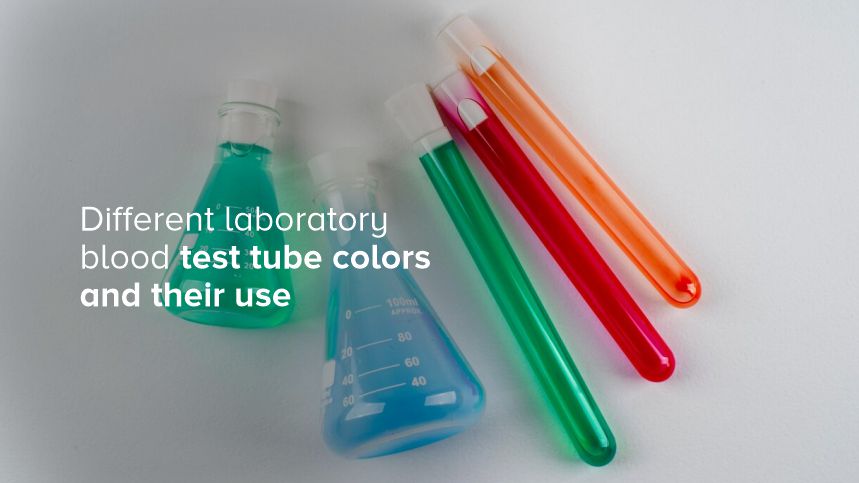


Condition
- Top tests
- Top tests
- Lifestyle Packages
- Infectious
- Preventive Health Checkup
- Diabetes
- Diabetes
- Preventive Health Checkup
- Top tests
- Top tests
- Heart Disease & Hypertension
- Lifestyle Packages
- Preventive Health Checkup
- Diabetes
- Diabetes
- Preventive Health Checkup
- Preventive Health Checkup
- Top tests
- Lifestyle Packages
- Diabetes
- Preventive Health Checkup
- Top tests
- Lifestyle Packages
- Diabetes
- Diabetes
- Diabetes
- Diabetes
- Diabetes
- Diabetes
- Preventive Health Checkup
- Preventive Health Checkup
- Diabetes
- Preventive Health Checkup
- Preventive Health Checkup
- Genomics
- Others
- Others
- Others
- Preventive Health Checkup
- Pulmonary / Infectious
- Diabetes
- Diabetes
- Others
- Preventive Health Checkup
- Others
- Preventive Health Checkup
- Top tests
- Others
- Genetics
- Others
- Gastrointestinal / Skeletomuscular
- Gastrointestinal / Skeletomuscular
- Others
- Others
- Others
- Others
- Others
- Others
- Others
- Others
- Others
- Others
- Others
- Others
- Others
- Others
- Others
- Others
- Others
- Others
- Others
- Others
- Others
- Others
- Others
- Others
- Others
- Others
- Others
- Others
- Others
- Others
- Others
- Others
- Others
- Others
- Others
- Others
- Others
- Others
- Others
- Others
- Others
- Others
- Others
- Others
- Others
- Others
- Others
- Others
- Others
- Others
- Others
- Others
- Others
- Others
- Others
- Others
- Others
- Others
- Others
- Others
- Others
- Others
- Others
- Others
- Others
- Others
- Top tests
- Top tests
- Top tests
- Top tests
- Top tests
- Top tests
- Top tests
- Top tests
- Top tests
- Preventive Health Checkup
- Top tests
- Top tests
- Top tests
- Top tests
- Blood Banking & Transfusion
- Lifestyle Packages
- Blood Banking & Transfusion
- Blood Banking & Transfusion
- Top tests
- Top tests
- Lifestyle Packages
- Diabetes
- Blood Banking & Transfusion
- Blood Banking & Transfusion
- Blood Banking & Transfusion
- Blood Banking & Transfusion
- Blood Banking & Transfusion
- Others
- Others
- Others
- Others
- Blood Banking & Transfusion
- Blood Banking & Transfusion
- Blood Banking & Transfusion
- Blood Banking & Transfusion
- Vitamin Deficiency
- Vitamin Deficiency
- Vitamin Deficiency
- Vitamin Deficiency
- Vitamin Deficiency
- Blood Banking & Transfusion
- Blood Banking & Transfusion
- Blood Banking & Transfusion
- Blood Banking & Transfusion
- Diabetes
- Diabetes
- Heart Disease & Hypertension
- Preventive Health Checkup
- Diabetes
- Preventive Health Checkup
- Preventive Health Checkup
- Diabetes
- Diabetes
- Heart Disease & Hypertension
- Top tests
- Heart Disease & Hypertension
- Diabetes
- Top tests
- Diabetes
- Heart Disease & Hypertension
- Lifestyle Packages
- Heart Disease & Hypertension
- Lifestyle Packages
- Heart Disease & Hypertension
- Heart Disease & Hypertension
- Lifestyle Packages
- Preventive Health Checkup
- Preventive Health Checkup
- Top tests
- Preventive Health Checkup
- Heart Disease & Hypertension
- Heart Disease & Hypertension
- Heart Disease & Hypertension
- Top tests
- Top tests
- Lifestyle Packages
- Heart Disease & Hypertension
- Heart Disease & Hypertension
- Top tests
- Heart Disease & Hypertension
- Preventive Health Checkup
- Diabetes
- Lifestyle Packages
- Heart Disease & Hypertension
- Top tests
- Heart Disease & Hypertension
- Heart Disease & Hypertension
- Diabetes
- Lifestyle Packages
- Preventive Health Checkup
- Diabetes
- Top tests
- Diabetes
- Allergy
- Heart Disease & Hypertension
- Diabetes
- Heart Disease & Hypertension
- Diabetes
- Lifestyle Packages
- Lifestyle Packages
- Top tests
- Preventive Health Checkup
- Lifestyle Packages
- Preventive Health Checkup
- Preventive Health Checkup
- Diabetes
- Top tests
- Heart Disease & Hypertension
- Preventive Health Checkup
- Top tests
- Heart Disease & Hypertension
- Lifestyle Packages
- Lifestyle Packages
- Diabetes
- Preventive Health Checkup
- Top tests
- Diabetes
- Top tests
- Preventive Health Checkup
- Preventive Health Checkup
- Preventive Health Checkup
- Diabetes
- Lifestyle Packages
- Lifestyle Packages
- Heart Disease & Hypertension
- Lifestyle Packages
- Heart Disease & Hypertension
- Lifestyle Packages
- Preventive Health Checkup
- Preventive Health Checkup
- Preventive Health Checkup
- Lifestyle Packages
- Top tests
- Lifestyle Packages
- Top tests
- Lifestyle Packages
- Top tests
- Diabetes
- Diabetes
- Others
- Blood Disorders
- Top tests
- Others
- Others
- Others
- Fever
- Fever
- Blood Disorders
- Blood Disorders
- Preventive Health Checkup
- Preventive Health Checkup
- Profile
- Kidney Disease
- Kidney Disease
- Diabetes
- Diabetes
- Heart Disease & Hypertension
- Preventive Health Checkup
- Lifestyle Packages
- Thyroid Disorder
- Diabetes
- Diabetes
- Diabetes
- Diabetes
- Diabetes
- Diabetes
- Diabetes
- Top tests
- Allergy
- Top tests
- Top tests
- Top tests
- Top tests
- Diabetes
- Top tests
- Diabetes
- Top tests
- Top tests
- Top tests
- Liver Disease
- Diabetes
- Top tests
- Vitamin Deficiency
- Top tests
- Top tests
- Liver Disease
- Top tests
- Top tests
- Top tests
- Anemia
- Anemia
- Anemia
- Diabetes
- Diabetes
- Anemia
- Top tests
- Top tests
- Top tests
- Preventive Health Checkup
- Thyroid Disorder
- Heart Disease & Hypertension
- Top tests
- Preventive Health Checkup
- Diabetes
- Heart Disease & Hypertension
- Top tests
- Fever
- Allergy
- Liver Disease
- Lifestyle Packages
- Heart Disease & Hypertension
- Top tests
- Arthritis
- Top tests
- Top tests
- Heart Disease & Hypertension
- Kidney Disease
- Preventive Health Checkup
- Allergy
- Top tests
- Lifestyle Packages
- Top tests
- Kidney Disease
- Top tests
- Lifestyle Packages
- Top tests
- Preventive Health Checkup
- Preventive Health Checkup
- Top tests
- Top tests
- Vitamin Deficiency
- Allergy
- Diabetes
- Top tests
- Top tests
- Top tests
- Top tests
- Heart Disease & Hypertension
- Allergy
- Top tests
- Preventive Health Checkup
- Top tests
- Top tests
- Infertility
- Top tests
- Lifestyle Packages
- Allergy
- Diabetes
- Heart Disease & Hypertension
- Lifestyle Packages
- Preventive Health Checkup
- Preventive Health Checkup
- Top tests
- Preventive Health Checkup
- Top tests
- Diabetes
- Top tests
- Infertility
- Top tests
- Thyroid Disorder
- Top tests
- Allergy
- Preventive Health Checkup
- Vitamin Deficiency
- Top tests
- Top tests
- Infertility
- Lifestyle Packages
- Diabetes
- Liver Disease
- Kidney Disease
- Vitamin Deficiency
- Top tests
- Heart Disease & Hypertension
- Heart Disease & Hypertension
- Top tests
- Heart Disease & Hypertension
- Heart Disease & Hypertension
- Heart Disease & Hypertension
- Infertility
- Heart Disease & Hypertension
- Vitamin Deficiency
- Vitamin Deficiency
- Arthritis
- Arthritis
- Top tests
- Top tests
- Lifestyle Packages
- Preventive Health Checkup
- Lifestyle Packages
- Preventive Health Checkup
- Vitamin Deficiency
- Top tests
- Lifestyle Packages
- Lifestyle Packages
- Preventive Health Checkup
- Top tests
- Preventive Health Checkup
- Top tests
- Heart Disease & Hypertension
- Infertility
- Top tests
- Top tests
- Preventive Health Checkup
- Lifestyle Packages
- Top tests
- PCOD
- Preventive Health Checkup
- Lifestyle Packages
- Preventive Health Checkup
- Top tests
- Fever
- PCOD
- Kidney Disease
- Top tests
- Top tests
- Preventive Health Checkup
- Preventive Health Checkup
- Liver Disease
- Thyroid Disorder
- Top tests
- Heart Disease & Hypertension
- PCOD
- Top tests
- Arthritis
- Preventive Health Checkup
- Kidney Disease
- Lifestyle Packages
- Top tests
- Allergy
- Top tests
- Top tests
- Diabetes
- Thyroid Disorder
- Preventive Health Checkup
- Top tests
- Lifestyle Packages
- Preventive Health Checkup
- Top tests
- Kidney Disease
- Liver Disease
- Infertility
- Top tests
- Anemia
- Top tests
- Top tests
- Top tests
- Preventive Health Checkup
- Bone Health
- Cancer
- Fatty Liver

Tests
Blood tests are a routine part of medical diagnostics, but have you ever wondered why there are so many different colored tubes? Each color serves a unique purpose, ensuring that your blood samples are processed correctly. In this blog, we'll take a deep dive into the world of blood test tube colors, their specific functions, and why they're essential for accurate medical results. Whether you're a curious patient or a healthcare professional, understanding these details is crucial.
Why Color-Coding Matters in Blood Testing
Color coding in blood testing is more than just an aesthetic choice; it’s a standardized system that helps medical professionals quickly identify the type of test required for each blood sample. This system minimizes errors, streamlines the process, and ensures that samples are treated with the appropriate reagents and additives.
- Improve Efficiency and Accuracy
Medical labs process thousands of samples daily. Imagine the chaos if there wasn't a standardized color-coding system. Color coding enhances efficiency and accuracy by making it easy for lab technicians to see at a glance what type of test needs to be performed.
- Reduce Sample Contamination
Each colored tube contains different additives meant to preserve the sample for specific types of analysis. Using the correct tube reduces the risk of contamination and ensures the integrity of the sample, leading to more reliable results.
- Streamline Training and Education
For medical students and new healthcare professionals, learning about the various blood test tubes can be overwhelming. A standardized color-coding system simplifies the training process, making it easier for them to understand and remember which tube to use for each test.
Red Top Tube – The Workhorse
The red top tube is perhaps the most versatile in the array of blood test tubes. Typically, it contains no additives, making it ideal for collecting serum.
Common Uses
Red top tubes are often used for serology and chemistry tests. These tests include measuring electrolyte levels, liver function tests, and lipid panels.
Advantages
The absence of additives means there's less chance of interference with the test results. This makes the red top tube a reliable choice for a broad range of tests.
Limitations
While versatile, the red top tube isn't suitable for all types of tests. For instance, it's not ideal for tests requiring anticoagulated plasma.
Lavender Top Tube – The Hematology Hero
The lavender top tube contains EDTA, an anticoagulant that helps preserve the shape and size of blood cells.
Common Uses
Lavender top tubes are primarily used for complete blood counts (CBC), including red and white blood cell counts and platelet counts.
Advantages
The EDTA in lavender tubes prevents clotting, allowing for accurate blood cell measurements. This is crucial for diagnosing conditions like anemia and infections.
Limitations
The presence of EDTA makes lavender tubes unsuitable for tests requiring serum, as the anticoagulant could interfere with the results.
Blue Top Tube – The Coagulation Champion
The blue top tube contains sodium citrate, another type of anticoagulant. This tube is essential for coagulation studies.
Common Uses
Blue top tubes are used for tests like Prothrombin Time (PT) and Activated Partial Thromboplastin Time (aPTT), which measure how long it takes blood to clot.
Advantages
The sodium citrate in blue top tubes preserves the clotting factors in blood, making it ideal for coagulation tests.
Limitations
Blue top tubes are not suitable for tests that require serum or whole blood, as the sodium citrate can alter the sample's properties.
Green Top Tube – The Chemistry Specialist
Green top tubes contain either lithium heparin or sodium heparin, both of which prevent clotting.
Common Uses
These tubes are typically used for plasma chemistry tests, such as liver function tests, ammonia levels, and certain drug levels.
Advantages
Heparinized plasma can be used immediately after centrifugation, making green top tubes ideal for urgent tests.
Limitations
Heparin can interfere with certain assays, so green top tubes are not suitable for all types of chemistry tests.
Gray Top Tube – The Glucose Guardian
The gray top tube contains sodium fluoride and potassium oxalate, making it perfect for glucose testing.
Common Uses
Gray top tubes are used for fasting blood sugar tests, glucose tolerance tests, and lactic acid measurements.
Advantages
Sodium fluoride preserves glucose levels, ensuring accurate measurements even if the sample is not tested immediately.
Limitations
The additives in gray top tubes can interfere with other types of tests, so they are generally reserved for glucose-related measurements.
Yellow Top Tube – The Genetic Genius
Yellow top tubes often contain acid-citrate-dextrose (ACD), which preserves whole blood for cell culture and genetic testing.
Common Uses
Yellow top tubes are used for DNA testing, HLA typing, and other genetic and tissue typing tests.
Advantages
The ACD solution preserves white blood cells, making it ideal for genetic studies and specialized tests.
Limitations
These tubes are not suitable for routine blood tests, as the ACD solution can interfere with other measurements.
Black Top Tube – The ESR Expert
The black top tube contains sodium citrate and is specifically designed for Erythrocyte Sedimentation Rate (ESR) tests.
Common Uses
Black top tubes are used exclusively for ESR tests, which measure inflammation levels in the body.
Advantages
The sodium citrate in black top tubes preserves blood cells, ensuring accurate ESR measurements.
Limitations
These tubes are specialized and not suitable for any other type of blood test.
Pink Top Tube – The Blood Bank Buddy
Pink top tubes are similar to lavender top tubes but are specifically designed for blood banking.
Common Uses
These tubes are used for blood type screening, crossmatching, and antibody identification.
Advantages
The EDTA in pink top tubes preserves the sample for accurate blood banking tests, ensuring safe transfusions.
Limitations
Pink top tubes are not suitable for other types of blood tests, as the EDTA could interfere with different assays.
Gold Top Tube – The SST Superstar
Gold top tubes, also known as Serum Separator Tubes (SST), contain a gel that separates serum from the blood cells.
Common Uses
These tubes are used for a wide range of chemistry tests, including hormone levels, cholesterol, and electrolytes.
Advantages
The separating gel ensures a clean sample, free of cells, which is ideal for comprehensive chemistry panels.
Limitations
Gold top tubes are not suitable for tests requiring whole blood or plasma, as the gel could contaminate the sample.
Light Green Top Tube – The PST Player
Light green top tubes contain lithium heparin and a gel separator, making them perfect for Plasma Separator Tubes (PST).
Common Uses
These tubes are often used for stat chemistry tests, where quick turnaround times are essential.
Advantages
The gel separator ensures a clean plasma sample, ready for immediate testing.
Limitations
Light green top tubes are not suitable for all tests, especially those requiring serum or whole blood.
Orange Top Tube – The Rapid Response
Orange top tubes contain thrombin, which rapidly clots the blood, making it ideal for stat serum tests.
Common Uses
These tubes are used for emergencies where immediate serum is needed, such as in critical care settings.
Advantages
The rapid clotting time ensures that tests can be conducted almost immediately, saving valuable time in critical situations.
Limitations
Orange top tubes are specialized for emergency use and are not suitable for routine tests.
Conclusion
Understanding the different colors of blood test tubes and their specific uses is essential for accurate medical diagnostics. Each tube's color indicates the presence of specific additives, which ensure the integrity and reliability of the sample for particular tests.
WANT TO BOOK HEALTH CHECKUP ?
Categories
Top tests
107
Lifestyle Packages
39
Infectious
1
Preventive Health Checkup
59
Diabetes
54
Heart Disease & Hypertension
38
Genomics
1
Others
81
Pulmonary / Infectious
1
Genetics
1
Gastrointestinal / Skeletomuscular
2
Blood Banking & Transfusion
16
Vitamin Deficiency
12
Allergy
9
Blood Disorders
3
Fever
4
Profile
1
Kidney Disease
8
Thyroid Disorder
5
Liver Disease
6
Anemia
5
Arthritis
4
Infertility
6
PCOD
3
Bone Health
1
Cancer
1
Fatty Liver
1
Recent Blogs
Coagulation Profile (PT, aPTT): Understanding Blood Clotting Tests
Hemostasis, widely known as blood clotting, is a sophisticated physiological process that...
30-12-2025
How HbA1c Helps Diagnose and Monitor Diabetes
Managing diabetes effectively requires consistent monitoring of blood sugar levels. While...
30-12-2025
Pregnancy Hormone Test: Understanding hCG Levels
Seeing those two pink lines or a flashing "Pregnant" on a digital display is a life-changing...
29-12-2025





.jpg)

